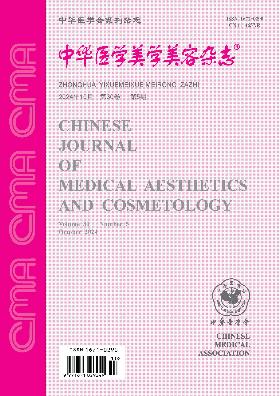Efficacy of cell-assisted autologous lipotransfer with 3D-scanning system
引用次数: 0
Abstract
Objective 3D-scanning system is put in use to evaluate the comparative effect between the cell-assisted lipotransfer (CAL) and traditional autologous fat transplantation, which aims to definitize the survival rate of fat after CAL and provide a reference for the clinic. Methods Fourteen cases were collected among patients aquiring facial autologous fat transplantation from February to May 2016 from the hospital out-patient department, which were then divided into two groups equally and randomly. 7 patients used traditional autologous fat transplantation form the control group and the rest 7 used the CAL. Autologous fat sample of the CAL group was grafted with stromal vascular fraction (SVF). All the patients received follow-up examination and the period lasted at least 6 months. 3D-scanning of facial models were conducted sometime before surgery, a week after surgery and also 3 months after surgery. Results The average transplantation volume of CAL group was 13.86 ml while the control group was 12.14 ml. There were no significantly differnt in the transplantation volumes of the fat (P>0.05). The survival rate of fat in CAL group was 37.82% while the control group was 27.54% after calculating the changing volume from the facial models. The survival rate of fat in CAL group was significantly higher than that in the control group (P<0.05). Conclusions 3D-scanning system can provide the data concerning the lipotransfer and calculate the survival rate of the fat. CAL can raise the survival rate of the fat. Key words: Transplantation, autologous; Adipose tissue; Cosmetic techniques; Comparative study; 3D-scanning system细胞辅助三维扫描系统自体脂肪转移的疗效
目的应用3d扫描系统评价细胞辅助脂肪移植(CAL)与传统自体脂肪移植的对比效果,明确CAL后脂肪的存活率,为临床提供参考。方法收集2016年2 - 5月在我院门诊部行面部自体脂肪移植的患者14例,随机分为两组。对照组7例采用传统自体脂肪移植,CAL组7例采用自体脂肪移植,CAL组采用基质血管分数(SVF)移植法。所有患者均接受随访检查,随访时间至少为6个月。术前、术后1周、术后3个月分别对面部模型进行3d扫描。结果CAL组平均移植体积为13.86 ml,对照组平均移植体积为12.14 ml,脂肪移植体积差异无统计学意义(P < 0.05)。根据面部模型计算变化体积,CAL组脂肪存活率为37.82%,对照组为27.54%。CAL组脂肪存活率显著高于对照组(P<0.05)。结论三维扫描系统可以提供脂肪移植的相关数据和计算脂肪的存活率。CAL可以提高脂肪的存活率。关键词:移植;自体;脂肪组织;整容技术;比较研究;三维扫描系统
本文章由计算机程序翻译,如有差异,请以英文原文为准。
求助全文
约1分钟内获得全文
求助全文
来源期刊
自引率
0.00%
发文量
4641
期刊介绍:
"Chinese Journal of Medical Aesthetics and Cosmetology" is a high-end academic journal focusing on the basic theoretical research and clinical application of medical aesthetics and cosmetology. In March 2002, it was included in the statistical source journals of Chinese scientific and technological papers of the Ministry of Science and Technology, and has been included in the full-text retrieval system of "China Journal Network", "Chinese Academic Journals (CD-ROM Edition)" and "China Academic Journals Comprehensive Evaluation Database". Publishes research and applications in cosmetic surgery, cosmetic dermatology, cosmetic dentistry, cosmetic internal medicine, physical cosmetology, drug cosmetology, traditional Chinese medicine cosmetology and beauty care. Columns include: clinical treatises, experimental research, medical aesthetics, experience summaries, case reports, technological innovations, reviews, lectures, etc.

 求助内容:
求助内容: 应助结果提醒方式:
应助结果提醒方式:


